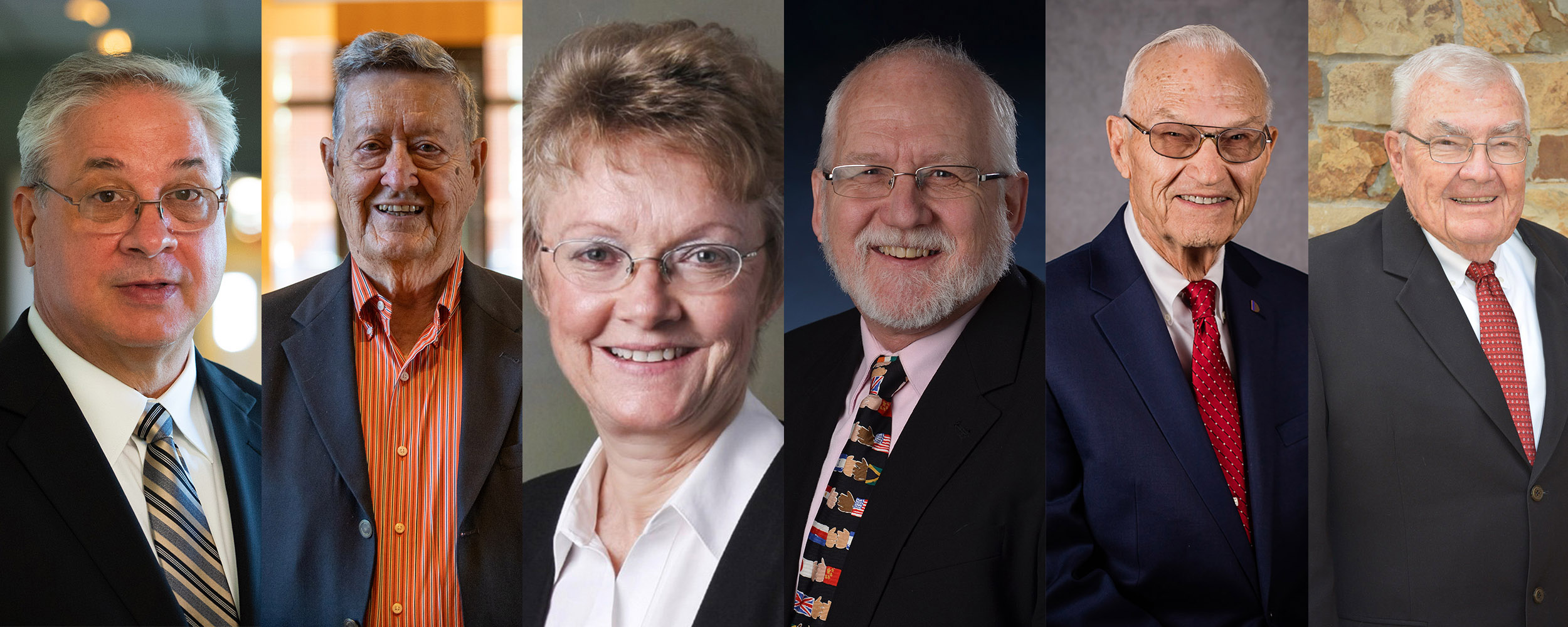
OSU's College of Engineering, Architecture and Technology announces 2022 Hall of Fame inductees, Lohmann Medal recipients
Monday, October 24, 2022
Media Contact: Kristi Wheeler | Manager, CEAT Marketing and Communications | 405-744-5831 | kristi.wheeler@okstate.edu
The College of Engineering, Architecture and Technology (CEAT) at Oklahoma State University has announced the 2022 Hall of Fame inductees and Lohmann Medal recipients.
CEAT Hall of Fame nominees must be a distinguished engineer, architect or technologist who has made an outstanding contribution to their profession or OSU and has served their community, state and nation with distinction. They should represent some of the most distinguished alumni and industry leaders associated with CEAT. The following candidates meet and exceed all criteria for the CEAT Hall of Fame recognition.
The Melvin R. Lohmann Medal was established in 1991 to honor alumni of CEAT for contributions to the profession or education of engineers, architects or technologists that merits the highest recognition. These honorees are also inducted into the CEAT Hall of Fame.
Lohmann Medal Recipients
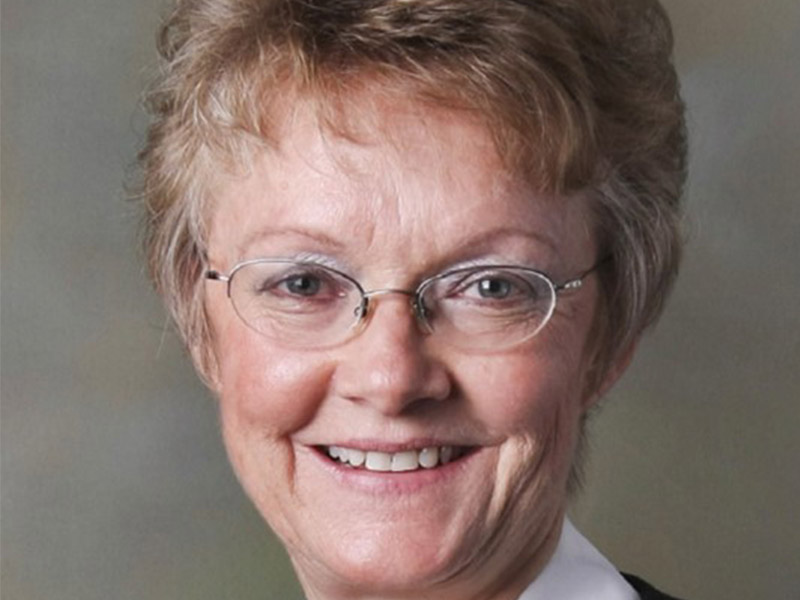
Carolyne M. Gowdy Hart was born in Memphis, Texas, in 1953. Six years later, her family moved to the farming and oil-producing community of Seminole, Texas, where Carolyne completed her primary and secondary education.
In 1975, Hart graduated from Howard Payne University with her bachelor’s degree in mathematics and a minor in biology. Her biology professor, Dr. Jack Stanford, is an OSU alumnus who encouraged her to apply for OSU’s summer National Science Foundation Undergraduate Research Participation Program, where she participated in both the microbiology and electrical engineering (EE) programs.
“I was able to attend both the microbiology and engineering summer seminars, but my research that summer was guided by Dr. Bob Mulholland from the School of Electrical and Computer Engineering,” Hart said. “That summer experience was transformative for me. The OSU faculty invested in me and opened up new horizons for me. It was a template for what I think higher education ought to be. I was anxious to return to OSU for graduate studies in EE and to work with my mentor, Dr. Mulholland.”
Hart graduated from OSU with a master’s degree in EE in 1976 and with her doctoral degree in EE in 1978. However, she left OSU with more than just an education. Hart’s favorite memory from the university was meeting and spending time with her future husband, Jay Hart.
After receiving her doctoral degree, Hart accepted a position at Sandia National Laboratories (SNL), a government-owned, company-operated Federally Funded Research and Development Center. She started the position during the 1970s energy crisis, when the U.S. Department of Energy tasked SNL to apply its capabilities to solve urgent energy issues.
“Because of the foundational knowledge that I’d acquired from OSU EE in data acquisition, signal processing and computational science, I was fully prepared to lead the team that developed the scientific bases for seismic hydraulic fracture mapping in tight, lenticular gas sands.”
A second-level manager that remembered Hart’s OSU academic background from her initial Sandia interview contacted her with an opportunity to lead the navigation, guidance and control team for the Sandia hypersonic testbed. The team developed and demonstrated terrain-following and landmark recognition navigation using real-time data from a small onboard synthetic aperture radar (SAR). Around 20 years later, that foundation of work was resurrected and informs today’s U.S. hypersonic systems.
As her management career progressed, Hart broadened her experiences and led teams to solve other national security problems, including leading Sandia’s innovative, next-generation ISR SAR and aided target recognition systems contributions, which she considers to be a highlight of her career. However, the final chapter of Hart’s career was what she considers the most challenging and fulfilling. She served as the vice president of Weapons Engineering and Product Realization and also as the chief engineer for Nuclear Weapons at SNL.
“I had a great career at SNL,” Hart said. “I was able to move around in a number of different disciplines, contributing to the innovation and maturation of a variety of technologies. But just like with OSU, what really kept me there was the people. I enjoyed their enthusiasm, collaborative spirit, innovative nature and dedication to serving the nation.”
Hart has been recognized various times throughout her career. A few of her honors include being an inductee of the U.S. Air Force Order of the Nucleus, receiving a U.S. Joint Improvised Explosive Device Defeat Organization (JIEDDO) commendation for technical and programmatic leadership of the most successful airborne IED detection asset in Afghanistan, receiving the U.S. National Research Council Applied Research Award for the significant, original contribution to research in rock mechanics, being selected as a distinguished member of the technical staff, an honor limited to 10% of Sandia Laboratories’ technical staff, and many more.
Out of everyone in Hart’s life, she considers her mother to be the most influential. When her mother was 12, she was diagnosed with rubella, which caused blindness. However, she only took a year off of her education and was allowed to return to the local sighted school. She graduated with her class and as salutatorian. Her mother’s differences, perseverance and determination taught Hart values that she will carry with her throughout everything she does.
“For me, being inducted into the CEAT Hall of Fame and receiving the Lohmann Medal
are more about honoring her life, love and dreams than about honoring my own accomplishments,”
Hart said.
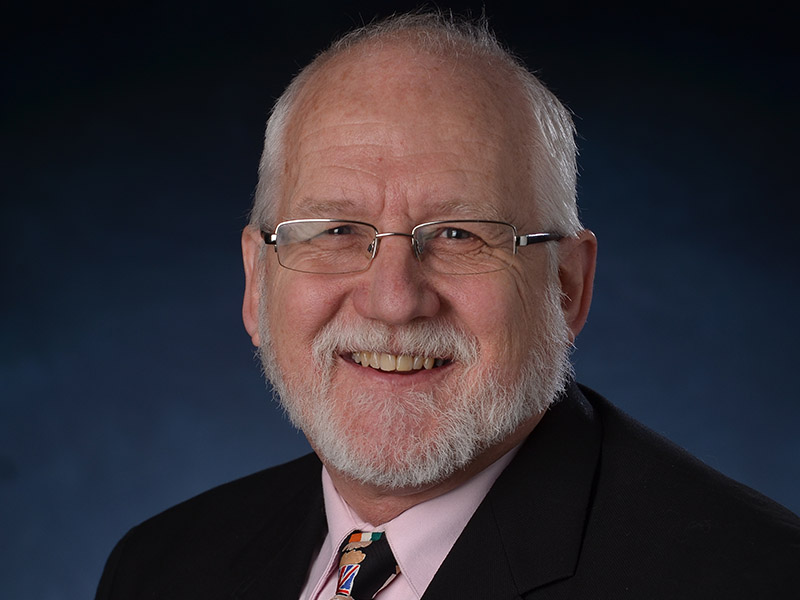
Jim Lansford grew up on, what was originally, a homestead farm in Skyline, Alabama. He graduated from Auburn University in 1980 with his bachelor’s degree in electrical engineering and with his master’s degree from Georgia Tech in 1982.
Lansford worked as a cooperative education student with the National Security Agency as his first engineering job. He continued working in defense-related jobs after receiving his bachelor’s and master’s degrees. After meeting OSU professor Rao Yarlagadda, Lansford decided to leave the industry and pursue his doctorate.
“A friend introduced me to Professor Yarlagadda at a conference and I was very impressed with his credentials. More importantly than the respect he had in the field of signal processing, he was modest, supportive and a genuinely kind person,” Lansford said. “I knew after meeting him that if I wanted to get my doctorate, he was the right person to be my adviser.”
OSU introduced Lansford to his best friend and wife of 35 years, Lynn Milburn Lansford. Not only did she attend OSU, but both of her parents worked as professors in the English department for over three decades. Lansford considers meeting his wife and her family to be a favorite memory of OSU along with his experience teaching.
“I taught a junior-level class and really enjoyed it; teaching as a graduate student while at OSU made a wonderful experience even more special,” Lansford said. “It’s very gratifying to see students do well in their studies and go on to successful careers. I have continued teaching as an adjunct professor at the University of Colorado-Boulder (CU), over the last 12 years, and love seeing what my students achieve after graduation!”
After graduating from OSU in 1988, Lansford worked at the Georgia Tech Research Institute doing research in advanced radar detection algorithms. In 1990, he left to begin teaching as an assistant professor at the University of Colorado at Colorado Springs. He eventually left the university and helped found a startup as a chief technology officer (CTO) for Momentum Microsystems, which would start his 25-year journey working in standards and regulations for wireless communications.
In late 1996, Lansford was hired by Intel Corporation to be the technical lead for a new technology called HomeRF. HomeRF combined technology from cordless phones with wireless local area networks in new ways that helped shape aspects of Wi-Fi technology. Four years later, Lansford became the vice president and the CTO of Mobilian Corporation. During his time as CTO at Mobilian, he helped the company raise over $70 million in venture capital before its acquisition.
After the acquisition of Mobilian by Intel in 2003, Lansford was invited to be the CTO and one of the founders of Alereon, which was one of the leading startups developing ultra-wideband wireless technology. During his 7 years as CTO of Alereon, he helped raise over $80 million in venture capital. In 2010, Lansford was hired by Cambridge Silicon Radio as the standards lead for their Wi-Fi technology efforts. The company was acquired by Qualcomm in 2015 and he has been with Qualcomm since the acquisition.
“As Bluetooth and Wi-Fi both started ramping up to billions of chips per year, a major problem loomed because they shared the same frequency band but were incompatible,” Lansford said. “I was able to take ideas for coexistence we had developed at Mobilian and get them adopted by the Institute of Electrical and Electronics Engineers (IEEE), and in turn that technology was adopted by the communications industry.”
This innovation was chosen by Microsoft as the most significant technology for computing platforms in 2001 at the Windows hardware engineering conference. Today, there are billions of phones and tablets that have this coexistence technology in them.
Lansford holds eight leadership positions in six different wireless standards organizations. He is the chair of the committee in IEEE that is the incubator for all new Wi-Fi technologies, an industry leader in ultrawideband communications and connected vehicle technology as well as the chief editor of the SAE standard that defines how cars communicate with each other to avoid collisions and hazards.
Over the past 12 years, Lansford has been using his career experience as a teaching opportunity for the students at CU. One piece of advice Lansford gives students before graduating is to show gratitude to those who have helped them along the way.
“I am grateful to many people for their influence on my life and career,” Lansford said. “My mother was a teacher and strongly stressed the value of education, as well as integrity and honesty. Beyond that, I have had several teachers that altered the course of my life and career. My wife, Lynn, has also been a huge influence; she is a passionate humanitarian and has taken on many projects to make the world a better place, so she invites me to look beyond the bubble of my engineering world to the larger issues of humanity.”
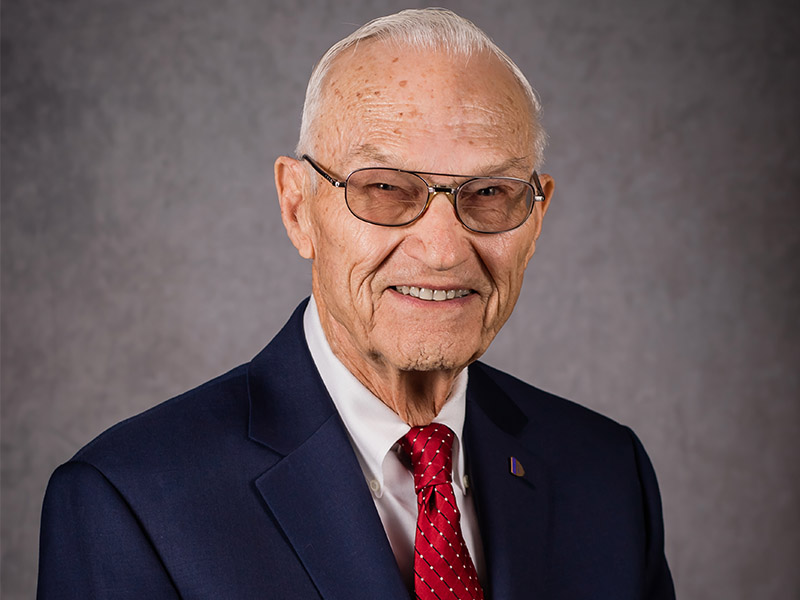
Lieu R. Smith grew up on a wheat farm 10 miles away from Okeene, Oklahoma, after moving from Michigan City, Indiana, during the great depression. All eight grades were taught in the same classroom with one teacher for much of Smith’s grade school experience. As he entered high school, agriculture was one of the basic classes he was required to take each year.
Growing up in a rural area inspired him to major in agricultural engineering with an emphasis on soil and water conservation. He graduated from OSU with his bachelor’s degree in agricultural engineering in 1954 and with his master’s degree in structural engineering in 1957. Smith also spent two years on active duty with the U.S. Army Corps of Engineers.
“My undergraduate time at OSU was a major time of adjustment from a small rural school background to a major university setting,” Smith said. “It permitted me to expand my horizons academically and socially as well as mature in my decision-making processes. My time at OSU, followed by going into the US Army Corps of Engineers as a Commissioned Officer, formed a core structure of who I was and the lifestyle principles that I stood for.”
Smith spent the majority of his engineering career working with the Sverdrup Corporation in St. Louis, Missouri, where he eventually rose to become the rank of corporate vice-president of advanced technology. The corporation is now a part of Jacob’s Solutions Engineering Company.
His engineering career started in the early 1960s working with Sverdrup on designing the large rocket test facilities at Stennis Space Center for the Saturn V Program, which ended up sending a man to the moon. This was only one of the well-recognized projects Smith got the opportunity to be a part of. He got to work on, manage and host projects like test facilities for a 300 mph tracked air cushion research vehicle, a 400- mile oil pipeline and marine terminal in the country of Algeria, liquid and solid- rocket engine test stands for the Space Shuttle and a $240 Million Space Shuttle Launch Pad Complex at Vandenberg, California, Air Force Base.
“The Space Shuttle Launch Pad Complex is the project that I am most proud of,” Smith said. “Because it was Air Force sponsored instead of NASA, with different missions, different payloads and operational requirements, it also presented new as well as constantly changing design requirements. We had a fixed price contract and schedule with the Air Force so there was a constant flow of contract changes along with the design requirement changes.”
Smith’s work as the project manager for the Space Shuttle Launch Pad Complex received numerous awards. On March 5, 1984, the project was featured in Time Magazine and the launch pad complex was described as the “most sophisticated military complex ever built.” Smith’s project earned Sverdrup the 1985 Grand Conceptor Award for excellence in engineering by the American Consulting Engineers Council and the complex was recognized as one of ten outstanding engineering achievements from the National Society of Professional Engineers.
In 1993, Smith retired to devote his time to working for his church as a self-sustaining ordained minister. He pastored the Berryville, Arkansas, Community of Christ for eight years and was awarded the status of “Pastor Emeritus” upon his retirement at the end of 2003. He continued to serve as a hospital chaplain and on a number of committees and boards at Mercy Hospital.
“I have always been mindful that I am in reality an Oklahoma farm boy who grew up on a very marginal farm during the dust bowl days,” Smith said. “Through the encouragement and help from a lot of very good people, I became very successful in my profession, thus it is my intent to give back to society by helping others.”
Smith has practiced helping others through many different professional and community activities. He has been actively involved in the “Loaves and Fishes Food Bank of the Ozarks” by designing and funding the construction of a new facility for the storage and distribution of food to the needy of Carroll County, Arkansas. He has also endowed a scholarship fund for female Native Americans to become doctors of osteopathic medicine through the OSU Center for Health Sciences.
Continuing to learn about new concepts and figuring out your strengths are two pieces of advice Smith recommends to all students in CEAT.
“Don’t be afraid to venture into new avenues of work that you are not familiar with,” Smith said. “Rockets and Space Ships were not even part of our vocabulary when I was in school. Secondly, discover what your best talents are and work to maximize them in your work. I found that mine was being able to organize projects and bring them to a successful conclusion.”
Hall of Fame inductees
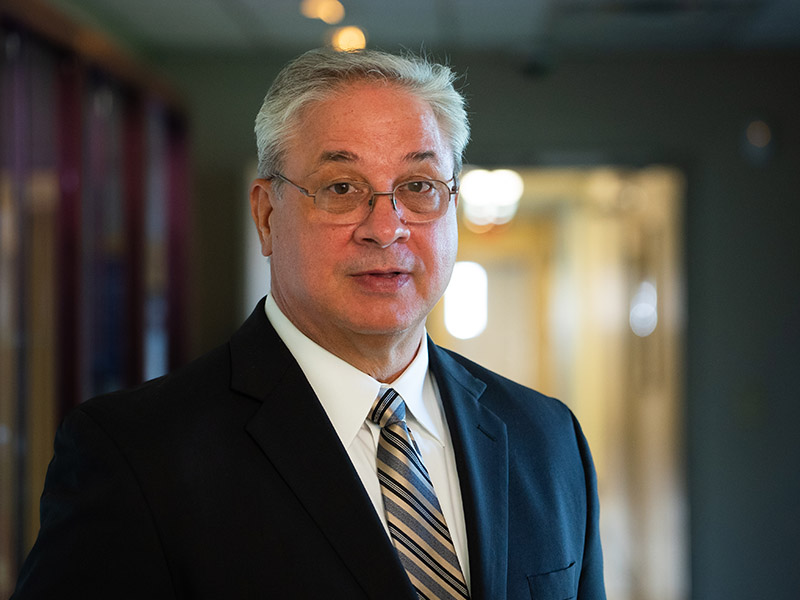
David Boyer grew up in Flora, Illinois, a small rural community in the southern part of the state. In 1982, he graduated from the Tabor School of Business and Engineering at Millikin University in Decatur, Illinois. While he had no initial interest in attending graduate school, he reconsidered after his engineering professors arranged a meeting with OSU’s industrial engineering and management (IEM) faculty.
“This introduction occurred at an Institute of Industrial Engineering senior chapter meeting in Decatur, Illinois,” Boyer said. “At the time, I thought the meeting with Dr. [John] Nazemetz was an impromptu encounter; but years later, I learned that it was a planned meeting that professors [Jim] Gross and Nazemetz had secretly prearranged.”
In 1984, Boyer graduated from OSU with a Master of Science in IEM.
Throughout his time at OSU, Boyer received guidance from many people around him. During his first semester, he married Sharon E. Boyer, whom he describes as his, “best friend and the love of his life.”
“Sharon has been and continues to be a pivotal influence in my life,” Boyer said. “By her enduring example, Sharon taught me that love is forever. Simply put, she is a very, very special person. And there has never been a better wife, mother or grandmother, aka Babi.”
He also considered his relationships with his professors to be the most essential part of his time spent at OSU.
“I very much enjoyed my relationship with my professors,” Boyer said. “Each one of them took an active interest in me, most notably Drs. Nazemetz and Case. Both these gentlemen spent many hours with me — coaching, mentoring or just visiting. Their thoughts and guidance made a profound impact on my life.”
Boyer has worked with Webco Industries since July 1984. His 38 years of experience with the company have resulted in diverse and increasing levels of responsibility, and he now serves as the president, vice-chairman of the board, and chief operating officer. Webco has grown and succeeded in significant ways during his tenure. Today, Webco is more than 20 times larger than it was four decades ago. Boyer is proud to have been a part of this exceptional growth.
Webco is a manufacturer and distributor of specialty metal tubular products, including precision welded tubing. It produces carbon, stainless steel, nickel, titanium, and other alloy tube products for a variety of applications. Today, Webco is the most diverse, technologically sophisticated, and fastest growing specialty metal tube mill in the United States.
“In some respects, I am not sure that I actually chose my career path; but rather, I think that my career path chose me,” Boyer said. “When I graduated from OSU, what I was looking for was ‘a job,’ but what I found at Webco was ‘a home.’ Webco was then and remains today, a vibrant and forever kind of company that focuses and builds on the strengths of its people. Webco is where people make the difference, and Webco is a place that makes a difference in the lives of its teammates — it certainly has made a significant impact in mine.”
Webco has been recognized by The Top Workplaces Organization as a 2022 Top Workplace in the United States. It has also been recognized by FastMarkets, the Tulsa Chamber of Commerce and Oklahoma State University for overall success and growth as well as having received numerous customer supplier of the year awards.
Boyer is proud to have worked alongside many exceptional people at Webco; among them are the company’s founder, Bill Weber, and the company’s chief engineer, Bill Obermark.
Boyer said that he was very blessed and quite honored to have been mentored by Webco’s founder, Bill Weber.
“Mr. Weber was the most present and prescient person that I have ever known. From his wise counsel and inspiring example, I learned important and timeless things about life and business,” Boyer said.
“I also owe a great debt of gratitude to Webco’s chief engineer, Mr. Bill Obermark,” Boyer said. “From Bill, I have learned what being an engineer is all about. These insights were gained from countless hours visiting Bill, often during our many Saturday lunches together. Bill is not only an exceptional engineer, he is also a magnificent mentor and friend.”
Boyer’s roles outside of work are being a husband, father and grandfather. He and Sharon have been married for nearly 40 years. The two of them have raised three wonderful daughters, Sarah, Erynn and Jenna, and have been blessed by three very special sons-in-law, Josh, B.J., and Nate, and enjoy being active figures in the lives of their five grandchildren, Emma, Ben, Lane, Madison, and Luke. When Boyer is off the clock, he can be found spending time with Sharon, at T-ball games, dance recitals, family dinners and conducting “Ice Monster” reenactments. Dave enjoys his family and sharing life’s experiences with them.

Jack H. Graham is the owner of Graham and Associates Professional Consulting Engineers in Yukon, Oklahoma. In 1959, he graduated from OSU with a Bachelor of Science in electrical engineering. Graham entered engineering at a time of major advancement in aerospace technology and worked on numerous ground-breaking projects in the middle of the U.S.-Soviet Union space race.
Graham was born on March 16, 1937, and raised on a dairy farm just outside of Oklahoma City as the youngest of four brothers. His oldest brother attended Oklahoma A&M and graduated with an electrical engineering degree after serving in World War II. Each of the brothers followed in his footsteps and all achieved at least a master’s degree, with Graham receiving a master’s in business administration.
“When my brother was attending college, he didn’t have to milk cows, and that looked promising,” Graham said. “So, all of us went to OSU and achieved, at least, a master’s degree and I haven’t had to milk a cow since!”
Graham attended OSU while married with two children. He worked for the university’s physical plant as an electrician’s helper and finished his required 148 hours needed to complete a bachelor’s degree in electrical engineering in only 3 1/2 years.
After graduating, Graham went to work for the Sperry Gyroscope Company in New York City, where he participated in the development of electronic countermeasures designed to render the B52 bomber invisible to Soviet radar systems.
“This technology was brand new, and I was on the front line of its design,” Graham said. “We didn’t know a lot about transistors or solid-state electronics back in those days, but when I went to New York that’s all we were doing; the very latest solid-state electronics.”
After working for the Sperry Gyroscope Company for four years the company sent Graham to Salt Lake City to work on a surface-to-surface missile system called Sergeant. The Sergeant was the first operational solid propellent, inertial guided missile system.
“I was involved in the Army acceptance and compliance testing performed at Aberdeen, Maryland and at Camp Hale in Colorado,” Graham said. “We also fired several missiles at White Sands Missile Range in New Mexico.”
After leaving the Sperry Gyroscope Company, Graham went to work for Boeing at Red Stone Arsenal in Huntsville, Alabama. While working with German rocket scientist, Wernher von Braun, Graham contributed to the development of the first stage of the Saturn 5 rocket system that would later put a man on the moon.
“I was a little cog in a great big wheel that put a man on the moon, one of the thousands of people involved in the project,” Graham said. “That was the single most extensive effort of mankind. It had more people and more money invested in it than any other effort in history. It was very exciting.”
Once the Saturn 5 system was running, Graham left Boeing to work for Ling-Temco-Vought in Grand Prairie, Texas. The project that company was focused on was creating a satellite system intended to shoot down Soviet intercontinental ballistic missiles. It didn’t work.
Having registered as a professional engineer during his time in Alabama, Graham moved back to Oklahoma City and began working for a mechanical and electrical engineering consulting firm. Graham bought this firm from its founders in 1974 and changed its name to Graham and Associates Professional Consulting Engineers.
Graham is a past president of the Oklahoma Society of Professional Engineers, a Fellow of the National Society of Professional Engineers, a benefactor of the CEAT Dean’s Club, a member of the Proud and Immortal Society, a Maxwellian Member of the School of Electrical and Computer Engineering (ECE), a member of the ECE Industrial Advisory Board and a sponsor of the Jack H. Graham Endowed Fellowship presently held by Professor John O’Hara in the School of Electrical and Computer Engineering.
Graham credits his success in engineering to his education.
“It was essential,” Graham said. “Everything I’ve done as a professional engineer was based on my education in the engineering department at OSU. I received as good, if not better, education than many of the engineers whom I worked with when I first joined Sperry. I’m very proud of the education I received at OSU. An engineering degree is an outstanding degree. It enables you to go out and, through technology, help build your society.”
Graham encourages current students not to take their education for granted, “Pay attention to your professors. You’re there for a purpose, and that purpose is to get educated. Don’t waste that opportunity.”
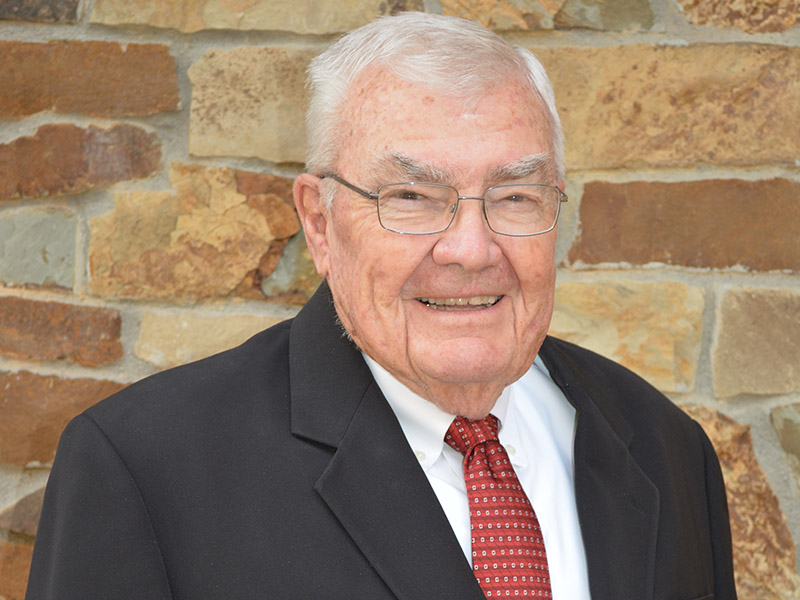
Robert W. Thompson graduated from Oklahoma State University with his bachelor’s degree in civil engineering in 1962 and his master’s degree in 1965.
Before transferring to OSU, Thompson started as a mining engineering student at the Colorado School of Mines. Between his sophomore and junior years, he worked underground and at the surface of the Climax mine in Colorado. This experience influenced his decision to switch his major to civil engineering and transfer to OSU.
While at OSU, Thompson was a member of the fraternity Pi Kappa Alpha. He met his wife, Lynda J. Fulton, at a fraternity and sorority exchange dinner. She was the president of Alpha Chi Omega, Mortar Board and active on campus as an undergraduate. They were married shortly after graduation in 1962.
“My wife certainly had the most influence on my life and career,” Thompson said. “She graduated in 1962 and did some graduate work at OSU while I completed my master’s degree. She helped when I started my own business and was a great partner until she died in 2020.”
Thompson spent his first two years after graduation working as a structural design engineer with Ketchum, Konkel, Ryan and Fleming of Denver before becoming an assistant project engineer on the Chena Hot Springs Highway project in Fairbanks, Alaska.
In 1964, Thompson traveled back to Stillwater, Okla. to complete his master’s degree.
He worked for Woodward-Clyde-Sherard and Associates for two years following the completion of his master’s program and then Chen and Associates for four years. Thompson founded his own geotechnical engineering firm in March of 1971, marking the beginning of the rest of his career.
“I was fortunate to have excellent, well respected mentors in the years prior to starting my own firm,” Thompson said.
CTL/Thompson Inc. currently has 280 employees, eight office locations and over 100,000 projects completed. When Thompson first established the firm, he was supervising a staff of 20-30 engineers and technical support personnel. At the time, the firm was known as Robert W. Thompson, Inc. Commercial Testing Laboratories (CTL) was acquired in early 1977 and the combined firm was named CTL/Thompson.
From 1977 to 1995, Thompson served as the president and chief executive officer of the firm, making him responsible for overall corporate financial management. The company’s primary technical areas of interest were soil-structure interaction, expansive soils, collapsing soils and evaluation of soil or foundation-related failures.
Some of the major projects that the company has been involved in include the 110-mile railway line laid from Gillette, Wyo., to Douglass, Wyo., for the development of the Power River Basin coal fields. Cuts and fills 90 feet in height were common along the new alignment. Thompson was a court appointed master to assist the arbitrators in understanding the technical testimony, in the Friendly Hills litigation which involved helping to resolve difficult foundation issues on nearly 100 homes built in a highly expansive soil area in southeast Jefferson County, Colo. The firm was retained to do the initial investigation for the foundation of the terminal building and to provide the pavement design for all of the pavements adjacent to the concourses and taxiways of Denver International Airport (DIA). This design was the basis for all runway pavements at DIA. CTL/Thompson was the quality assurance contractor during the construction of DIA. The firm provided quality assurance for the construction of the award-winning Highway I-70 project in the Glenwood Canyon in Colo. CTL/Thompson was also responsible for the geotechnical portions of the design and construction of the Fortune Dam in Jefferson County, Colo. The dam is more than 80 feet high for roughly 3,000 feet and has a total length of 5,000 feet. Thompson has been involved in the repair of more than 500 structures damaged by foundation movement.
“My firm has been a leader in bringing the use of soil suction measurements into practice in the front range area of Colorado,” Thompson said. “I became aware of test methods for measurement of soil suction through Dr. Donald Snethen at OSU while I was on the Board of Visitors for Civil Engineering.”
Based on six years of monitoring changes in surface elevation combined with periodic measurements of soil suction to depths as great as 40 feet, Thompson recommended a change in the basic design for expansive soils in the Front Range in Colorado in 1992. This change has been incorporated successfully in thousands of projects since that time.
The offices expanded from Denver to Colorado Springs, Glenwood Springs and Ft. Collins, Colo., from 1995 to 2000. Commercial Testing Laboratories were also located in Denver and Patton Burke and Thompson LLC in Dallas, Texas. During this expansion, Thompson’s role in the company was chairman of the board and chief executive officer. The combined companies provide geotechnical, materials and geo-environmental engineering services.
Thompson became the senior principal and chairman of CTL Thompson, Inc. in 2000. He continued his interest in developing testing and analytical procedures for expansive soils as well as participating in local and national groups representing geotechnical engineers. In 2003, Thompson started working part-time in his service as a senior engineer after 2005 until 2015.
Throughout his career, Thompson has been active in a wide variety of publications for the American Society of Civil Engineers (ASCE), served as the president of the Association of Soils and Foundations Engineers, and received the 2017 Colorado Legacy Award as well as many more accomplishments. ASCE activities included service as an initial trustee of AGP, publication of many technical papers and long-term service as an evaluator for civil engineering accreditation. He has two pieces of advice for all current CEAT students before they enter their career paths.
“First, learn skills in public speaking and presentations,” Thompson said. “You will be required to present to planning commissions, building code officials, clients, professional groups and many others. Second, focus on learning the fundamentals as an undergraduate. There will be considerable new knowledge and change over the course of your career. Good fundamental knowledge will help you evaluate the changes. Lifelong learning must be anticipated.”
The College of Engineering, Architecture and Technology would like to congratulate all of its 2022 Hall of Fame inductees and Lohmann Medal recipients.
Story By: Bailey Sisk | basisk@okstate.edu
